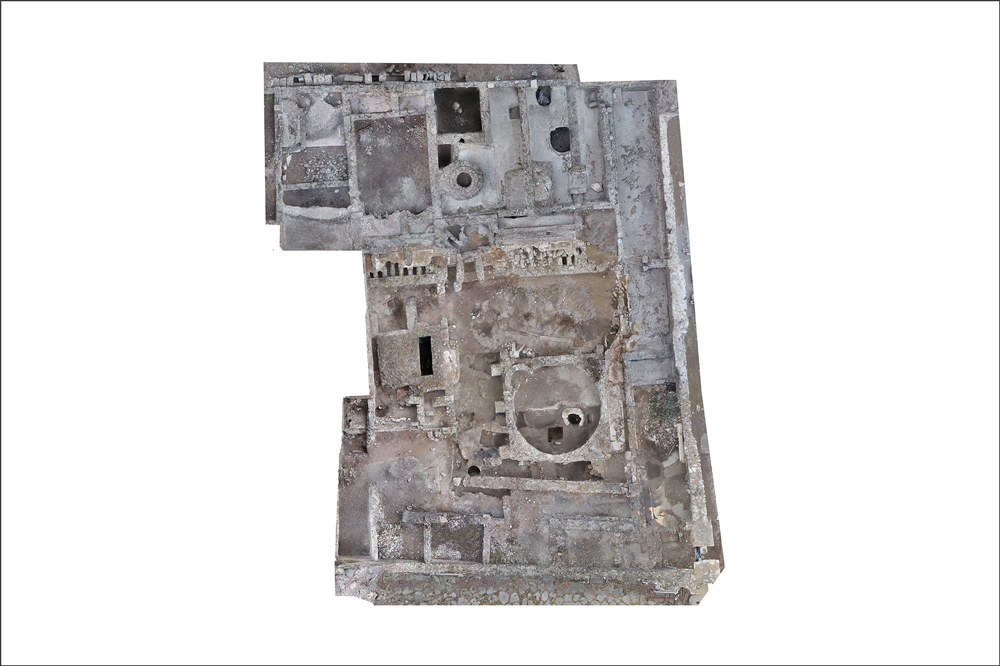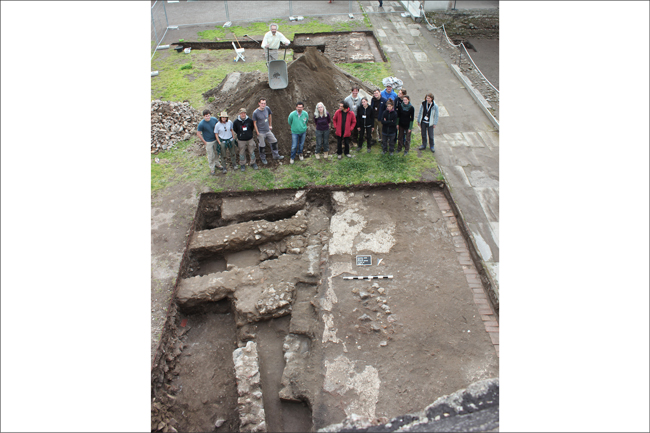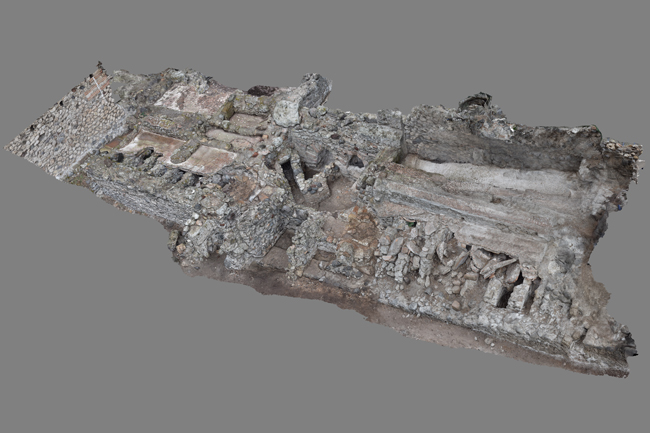This project initially aimed at investigating water management of ancient cities in Sicily, adopting an interdisciplinary, diachronic, and comparative approach. Because of the limited time span of this project (2014-2017), focus was, first, quickly restricted on the water management of bathing facilities and, second, slightly shifted to include regions outside Sicily.
Research
Three different lines of research were pursued:
1. Within the frame of the American Excavations at Morgantina/ Sicily, a Greek public bath, so-called South Baths, was fully excavated between 2013 and 2015, under direction of Sandra Lucore (American Excavations at Morgantina) and Monika Trümper. Reconstruction of the water management of this complex is particularly challenging and inspired a systematic, synthetic assessment of the little studied water management of Greek public baths in the entire Mediterranean. Research profited significantly from collaboration and discussion with physical geographers (Jonas Berking and Brian Beckers, FU Berlin) and hydraulic engineers (Henning Fahlbusch, University of Applied Sciences Lübeck). This projects results in an updated online catalogue of Greek public baths (5th century BC – 2nd century AD; for a first printed version: S.K. Lucore – M. Trümper (eds.), Greek Baths and Bathing Culture: New Discoveries and Approaches. BABESCH Suppl. 23, 2013) that is being revised for publication in the Edition Topoi Collections, and in several articles.
2. While bathing facilities in Greek public baths needed comparatively little water, abundant water supply was crucial for the installation and successful operation of large pools that served for immersion or even swimming. This project provided the first systematic and synthetic investigation of Greek swimming pools in the eastern Mediterranean. The 14 identified pools (4th – 1st century BC) were included in Panhellenic sanctuaries, gymnasia, and royal palaces, and clearly constituted luxury features for use by selected elites. The small number of pools does not suggest, however, that the Greeks lacked a concept of swimming as sportive and leisure activity, as often argued in scholarship. This project showed that challenges of water management are a major, if not the main reason why the Greeks did not systematically build swimming pools as an urban standard for the physical education and pleasure of broader parts of the population. Results were presented at several international conferences and in three articles. Furthermore, a similar study of swimming pools in the western Mediterranean is under way.
3. Within the frame of the Topoi research project (C-6-8) Bathing Culture and the Development of Urban Space: Case Study Pompei two early Roman baths were investigated (Republican Baths and Stabian Baths, 2nd century BC – AD 79). While it is obvious that water management is central to the operation of baths, this project was the first to systematically and synthetically assess the significance of water management for the development of Roman bathing culture in the crucial formative period (2nd century BC – 1st century AD). The Republican and Stabian Baths exemplarily allowed for reconstructing the close interdependence between water supply and the transformation of bathing standards. While the Republican Baths were only supplied by a deep well (two phases with different waterlifting devices), supply of the Stabian Baths was moved beyond this simple standard: the original deep well (with sophisticated waterlifting device) was replaced by a connection to the public aqueduct (two phases of use); the continuous improvements of water supply corresponded with important changes of the bathing program. The projects profited significantly from collaboration with hydraulic engineers (Henning Fahlbusch and Kai Wellbrock; University of Applied Sciences Lübeck) and geoscientists for analysis of calcareous concretions (Gül Sürmelhindi and Cees Passchier; University of Mainz). This project has yielded several conferences, papers at international conferences, and articles (for detailed information, see https://www.topoi.org/project/c-6-8/).
All three projects show that the water management of bathing facilities is closely interrelated with the water management of the larger contexts (cities, sanctuaries, palace areas), which is often not sufficiently known, however, and requires further investigation.
The project has organized three conferences. Moreover results of the project has been presented at several international conferences and workshops:
Project Partners
- American Excavations at Morgantina
- Freie Universität Berlin, Institute of Geographical Sciences / Physical Geography – Brian Beckers, Jonas Berking
- University of Mainz, Institute of Geosciences – Cees Passchier, Gül Sürmelihindi
- University of Applied Sciences Lübeck – Henning Fahlbusch, Kai Wellbrock
Related Links
- South Baths and West Sanctuary of Demeter and Kore at Morgantina: Project pages on the website of the Institute for Classical Archaeology, FU Berlin
- Bathing Culture and the Development of Urban Space: Case Study Pompeii: Project pages on the website of the Institute for Classical Archaeology, FU Berlin
- Website of the American Excavations at Morgantina



